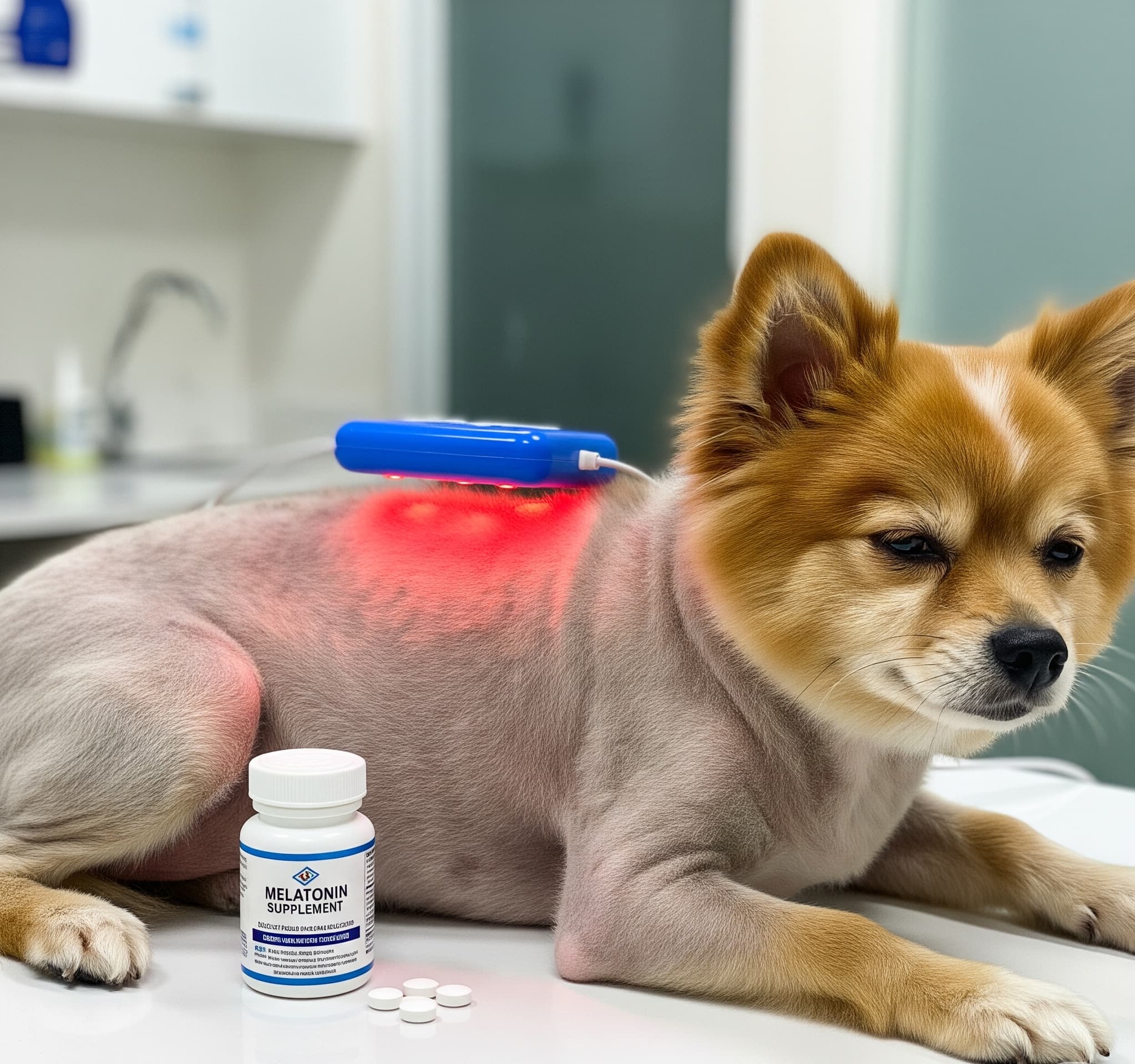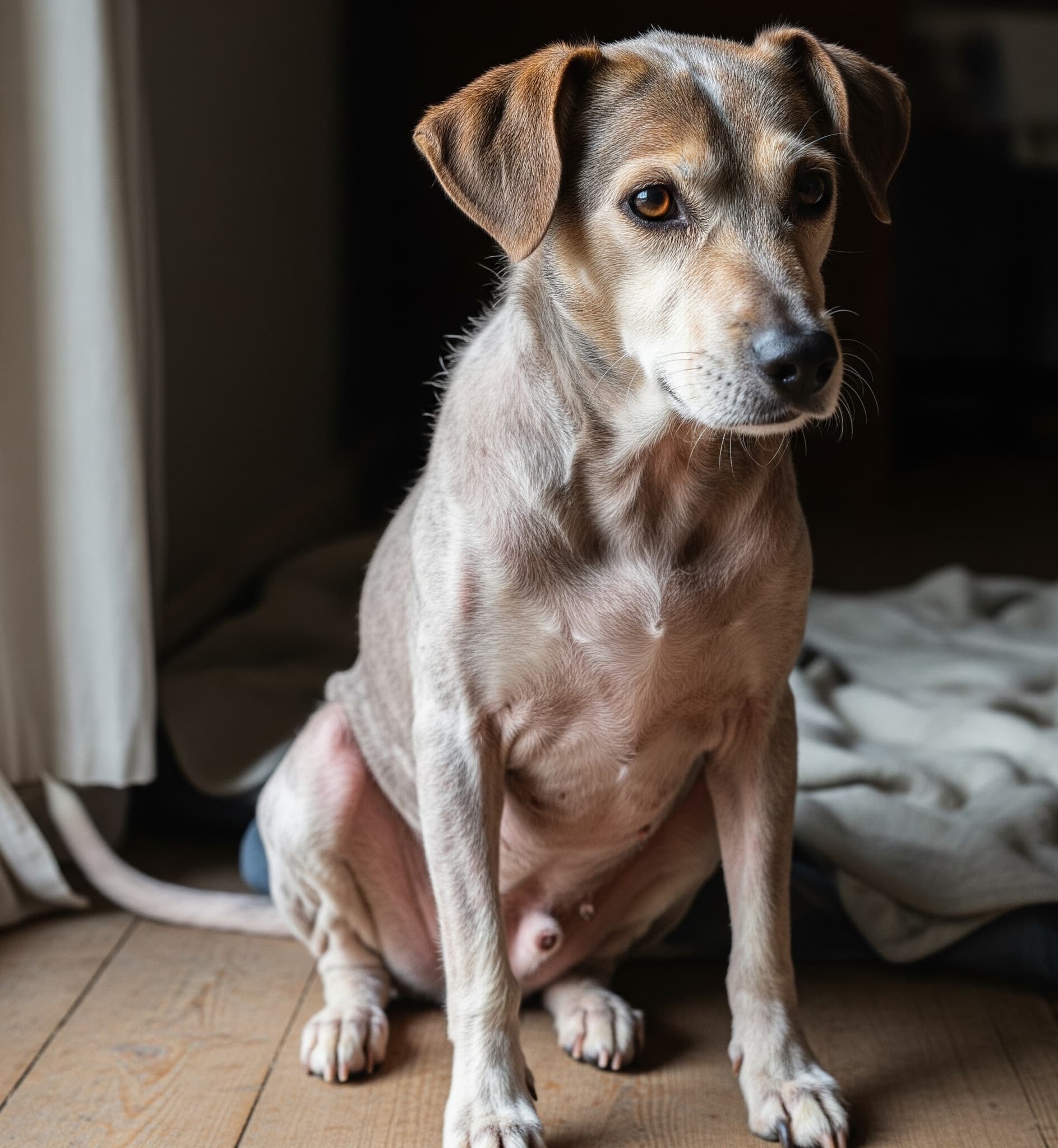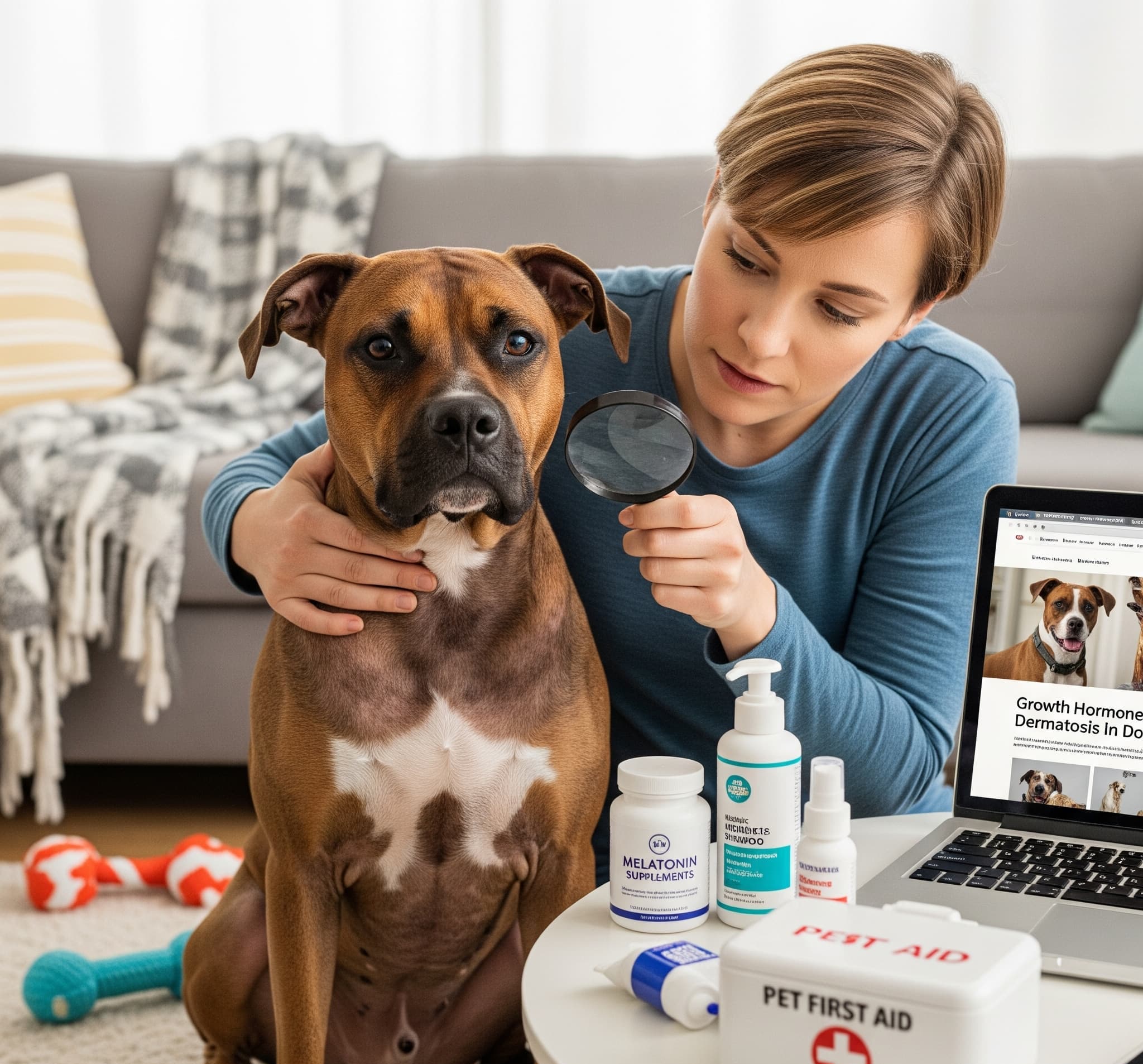Melatonin vs. Photobiomodulation: Which Treats Alopecia X Better for dog?
Melatonin or PBM for Alopecia X? Find out which one can boost your dog’s coat and comfort. Get all the details now!
Introduction
If your German Spitz or Pomeranian is losing fur to Alopecia X, you want solutions that actually restore that signature coat. This non-inflammatory hair-loss condition can leave dogs spotty or bald all over, and the thinning fur can be more than cosmetic. Melatonin and photobiomodulation (PBM) have both been gaining attention as ways to nudge fur back to life. The question is, which one really delivers? In the sections that follow, we’ll lay out what melatonin and PBM can do, weigh their effectiveness and safety, and consider how easy they are to fit into your daily routine, so you can choose the best path to a fuller, happier coat for your pup.
Here’s what we’ll cover:
- What Is Alopecia X and Why Does It Matter?
- Melatonin: Can a Sleep Hormone Regrow Fur?
- Photobiomodulation: Is Red Light Therapy the Future?
- Melatonin vs. PBM: A Head-to-Head Comparison
- FAQs: Your Top Questions Answered
What Is Alopecia X and Why Does It Matter?
Alopecia X, or “hair cycle arrest,” is an unsettling puzzle primarily seen in breeds such as the German Spitz, Pomeranian, and Keeshond. Unlike other types of coat loss, it skips the telltale signs of inflammation—no redness, no itching—yet the hair simply pauses in the anagen phase and stops growing. This halt leaves stark patches that can invite skin infections, invite UV damage, and expose the dog to chilling or overheating. For owners, the issue runs deeper than looks; a full coat is a marker of overall vitality. When the coat fails, so does the shield against environmental stresses. Finding a dependable treatment is critical, and both melatonin and photobiomodulation (PBM) have flashed encouraging results in early studies. But how does each option affect the hair cycle, and which offers the best odds of recovery? Let’s sort the science and find the answer.
Melatonin: Can a Sleep Hormone Regrow Fur?
Melatonin may ring a bell as the helper of bedtime, yet it moonlights as a hair-growth booster, too. Research reveals that the hormone nudges hair follicles, including those of canine friends, to linger longer in the plush anagen, or growth, phase. For Alopecia X, we often start oral dosing at 3 mg per kilogram every 12 hours, sticking with it for three months. One study tracked a mixed pack of Pomeranians, Keeshonds, and their friends, and 62 percent of the crew trotted out with new or fuller coats after the course. Beyond pushing growth, melatonin also plays defense, mopping up free radicals that might burn out the follicles. Side effects, when they pop up, tend to be mild—occasionally a bit of swelling at an injection spot.
So, why bring it into the toolbox? Melatonin is a breeze to slip into a routine—pills, chews, or implants, take your pick. Wallet-friendly and backed by decent studies, it often makes sense as an opening act. The catch? Dogs respond at different volumes, and scientists are still hunting for the exact track—whether it’s taming androgens or outsmarting oxidative stress. For a pup at the first flutter of Alopecia X, melatonin can be a wise and gentle first-line play.
Photobiomodulation: Is Red Light Therapy the Future?
Photobiomodulation, once a laboratory curiosity, now quietly fires red light (around 660nm) into hair follicles, waking dormant strands. It started 50 years ago when a ruby laser coaxed a mouse’s bald patch into plush fur; today, it’s the science-backed response to androgenetic alopecia in people. For Alopecia X in dogs, the protocol is simple: two 3-joule-per-point sessions a week, repeated for 90 days. A 2024 study is now following a pack of German Spitz, using dermatoscopy to plot every micron of hair density and thickness. Preliminary graphs already show livelier follicles and richer blood flow, all without a single scratch of adverse effects.
What keeps PBM in the conversation is its hands-off elegance. No pills, no surgeries, just photons riding into the scalp. Machines like the e-light IRL, with its pinpoint laser diodes, deliver the light with surgical exactness, yet the regimen sticks to a strict clock and often demands a clinic’s cold, metallic schedule. For the gadget-loving owner or the lucky one with a PBM-friendly vet nearby, the trade-off of time and money might feel like a small toll for a piece of tomorrow’s medicine today.
Melatonin vs. PBM: A Direct Comparison
So which therapy is the better pick for Alopecia X? Let’s size them up on the essentials:
Efficacy: Melatonin is ahead, with data showing 62% of dogs regrow hair either partially or completely. PBM data in dogs is still early, but human work points to significant gains in hair density and thickness. A 2024 study is now testing whether the two together can push the numbers even higher.
Safety: Both options are gentle. Melatonin has only very mild side effects, like the occasional little swelling, and PBM is completely non-invasive and has not produced any negative reports in dogs.
Ease of Use: Melatonin takes the prize for simplicity; dogs can take it in easy pills or small implants right at home. PBM, on the other hand, needs special machines and clinics or pricey home setups, which can add up in time and travel.
Cost: Wallet-wise, Melatonin is a clear winner, costing under $20 a month for pills. PBM machines or clinic visits can total in the hundreds, which some owners might find tough to swing.
Speed: Melatonin typically shows a peek of improvement within 30 to 90 days. PBM, however, needs many repeated sessions for at least 90 days, and the final numbers are still being nailed down.
If your pup’s dealing with mild Alopecia X and you’re after a budget-friendly, simple solution, melatonin’s your best bet. On the other hand, if you’re open to the latest tech, PBM therapy looks encouraging, especially when paired with melatonin. Just make sure to touch base with your vet to customize the approach for your dog.
FAQs: We’ve Got You Covered
When will I see results from melatonin or PBM?
With melatonin, you might notice changes in 30 to 90 days. PBM usually takes a bit longer, about 90 days with twice-weekly sessions. So, a little patience will pay off!
Is it safe to use melatonin and PBM together?
Research so far hasn’t flagged any big problems, but it’s best to run the combo by your vet first.
Can I use PBM equipment at home?
There are home PBM units out there, but they’re pricey and you’d need special training. Getting PBM done at the clinic is usually safer and more effective.
Is melatonin safe for every dog breed?
Melatonin is safe for most, but it doesn’t guarantee results for every breed or every case. Your vet can help decide if it’s a good fit for your dog.
Conclusion:
Alopecia X can feel like an uphill battle, but melatonin and photobiomodulation give you real chances to revive that lost fur. Melatonin has a long track record—easy to find, easy on the wallet, and often works like a charm for lots of dogs. PBM is still on the rise, a little more expensive, and uses laser and light science to show some really encouraging signs. To decide, weigh your budget, your dog’s unique situation, and your ability to stick with the laser schedule. Unsure how to begin? Book a chat with your vet and together map out a path to a full, bouncy coat again.
Have you tried either treatment for Alopecia X? We’d love to hear how it went—drop a comment or ask our friendly community. For the newest tips on pet health, sign up for our newsletter and stay in the loop!




Post Comment